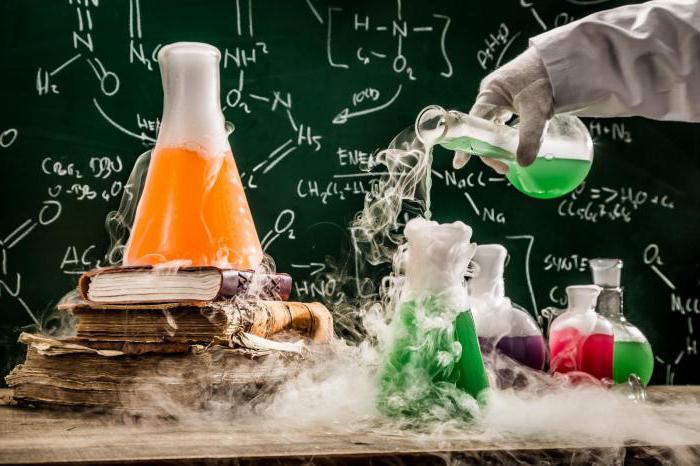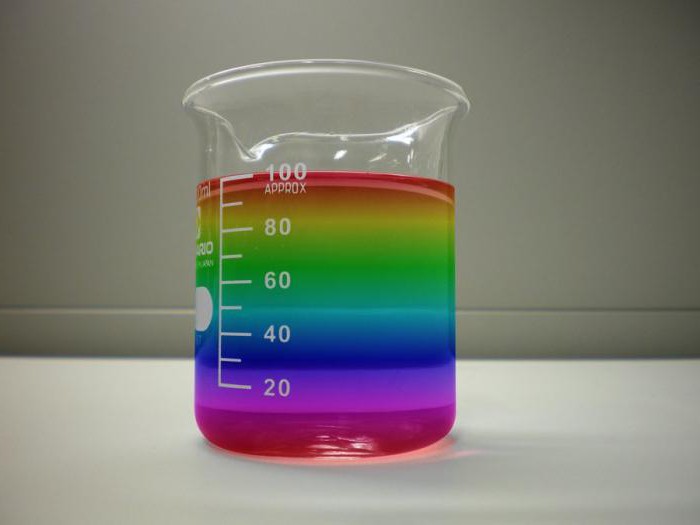All modern chemistry is engaged in nothing more than the study of the conditions for the interaction of substances among themselves or, in the scientific language, of various types of chemical reactions. One of the main properties of matter is motion. The phenomenon of the appearance of new compounds as a result of recombination of reagent atoms, which are characterized by all types of reactions in chemistry, is caused precisely by the ability of elementary particles to move. The atomic-molecular theory created back in the 18th century is still the theoretical basis for the classification of various types of reactions. In order to get the chemical products necessary for human society on an industrial scale, it is necessary to study the principles of technological processes and be able to manage them.

For this, it is necessary to know perfectly the properties of the chemical reactions underlying them. Our article will deal with the conditions of interaction between different classes of substances: acids, salts, bases and oxides. Next, we will identify the main types of chemical reactions, giving specific examples.
Homogeneous and heterogeneous environment
Chemistry studies the objects of the physical world that are in three of the four possible forms of existence of matter: gaseous, solid, and in the form of a liquid. If the initial reacting compounds have the same phase, for example gas-gas, as in the process of obtaining water from hydrogen and oxygen, then this type of interaction will be homogeneous. And reactions occurring in an inhomogeneous medium are called heterogeneous. This, for example, the displacement of an active metal - sodium, potassium, magnesium, in a solid crystalline state, hydrogen atoms from a solution of perchloric acid. Does the state of aggregation of reacting substances affect the parameters of a chemical process, for example, its most important indicator - speed? It turned out that yes. And the main role in this case is played by convection - the movement of a mass of liquid or gas on the surface of the catalyst.
Heterogeneous catalysis
Taking into account the phase of the reagents is necessary for large-scale chemical-technological processes. Most of them are carried out through the use of heterogeneous catalysis and occur in an inhomogeneous medium on the surface of the catalyst. Its activity is directly proportional to the area on which the molecules of the starting compounds contact. To do this, the catalyst in the form of a powder is applied to asbestos or pumice plates having a porous structure. Usually the whole process is carried out according to the principle of active intermediates represented by surface complexes of the catalyst itself and the reactants. As we recall, multi-stage reactions occurring in an inhomogeneous medium are called heterogeneous. They end with the formation of the desired products; the catalyst itself is not wasted in this case.
Ammonia Oxidation
According to the above mechanism, the technological process of obtaining nitric acid by the oxidation of ammonia occurs . It was proposed at the beginning of the 20th century by a Russian chemical engineer I. I. Andreev, who is the father of the nitrogen industry in Russia. A platinum grid was used as a catalyst, to which a mixture of air and ammonia was heated to 750 °. Nitric acid was obtained as a result of three successive chemical reactions, the conditions of passage of which depended on the purity of the catalyst. Therefore, the platinum mesh was constantly cleaned of harmful impurities: dust and hydrogen sulfide.
Classification of Chemical Phenomena
The substances around us undergo various changes. If they concern only the state of aggregation and do not affect the qualitative composition of the molecules, then such phenomena are called physical. For example, melting of solid iron, boiling water to form steam, etc. These and others, similar phenomena, are studied in the course of physics. But the electrolysis of the same water, proceeding with the formation of simple substances - oxygen and hydrogen gases, the burning of magnesium tape - these are various types of reactions in chemistry. They lead to the emergence of new compounds, provided that the elemental composition of the reacting substances is preserved and are classified according to different criteria. Let's consider them further.
Change in the amount of reagents and reaction products
Chemical interactions suggest the redistribution of atoms that make up the molecules of the starting compounds. Based on this principle, a classification is constructed that distinguishes the decomposition, compound, exchange and substitution reactions . The decomposition of calcium carbonate during firing is a typical example of a heterogeneous reaction, the speed of which will depend on the area of contact of the two phases: solid and gaseous. The exchange reaction between the basic oxide of CuO and sulfate acid also occurs in the area of contact of the solution with solid copper oxide. The industrial production of sulfuric acid from sulfur trioxide and water demonstrates an interaction mechanism in which one of the two substances is obtained (reaction of the compound). The neutralization reaction, leading to the formation of water, is a special case of metabolic processes; it is widespread in animal and human cells.
Substitution in Inorganic and Organic Compounds
Recall that reactions occurring in an inhomogeneous medium are called heterogeneous. The ability of magnesium chips to react with a solution of perchloric acid is also well known from a chemistry course in high school. In a test tube at this time, rapid evolution of gas bubbles is observed. This is hydrogen formed as a result of the substitution reaction, another product of this process - a solution of magnesium chloride. By the ability of metal atoms to replace hydrogen in an acid molecule, an outstanding Russian chemist N. N. Beketov created a series of metal activity. Substitution processes are widely used in organic chemistry. These are halogenation of saturated hydrocarbons, nitration of benzene , etc.
Chemical properties
Continuing to study the interactions of substances with each other, we turn to those of them that are accompanied by the absorption or release of energy in the form of heat. This classification includes exothermic and endothermic reactions, which, in addition to the equation itself, contain an indicator - the thermal effect of the reaction ΔH. For the process of producing hydrogen chloride from simple gaseous substances: chlorine and hydrogen, ΔH is a negative value, i.e., the reaction itself is exothermic, and in the process of nitrogen oxidation to its monoxide ΔH = 90.4 kJ, in this case the reaction is endothermic, which occurs with heat absorption.

As we know, reactions occurring in an inhomogeneous medium are called heterogeneous. They play an important role not only in technological processes of industrial production of chemical products, but also in wildlife. These are the processes of water entering the root hairs, the dissolution of mineral fertilizers and their absorption by plants, the diffusion of oxygen and carbon dioxide in the soil.
In this article, we studied the types of reactions in chemistry and determined their practical significance.